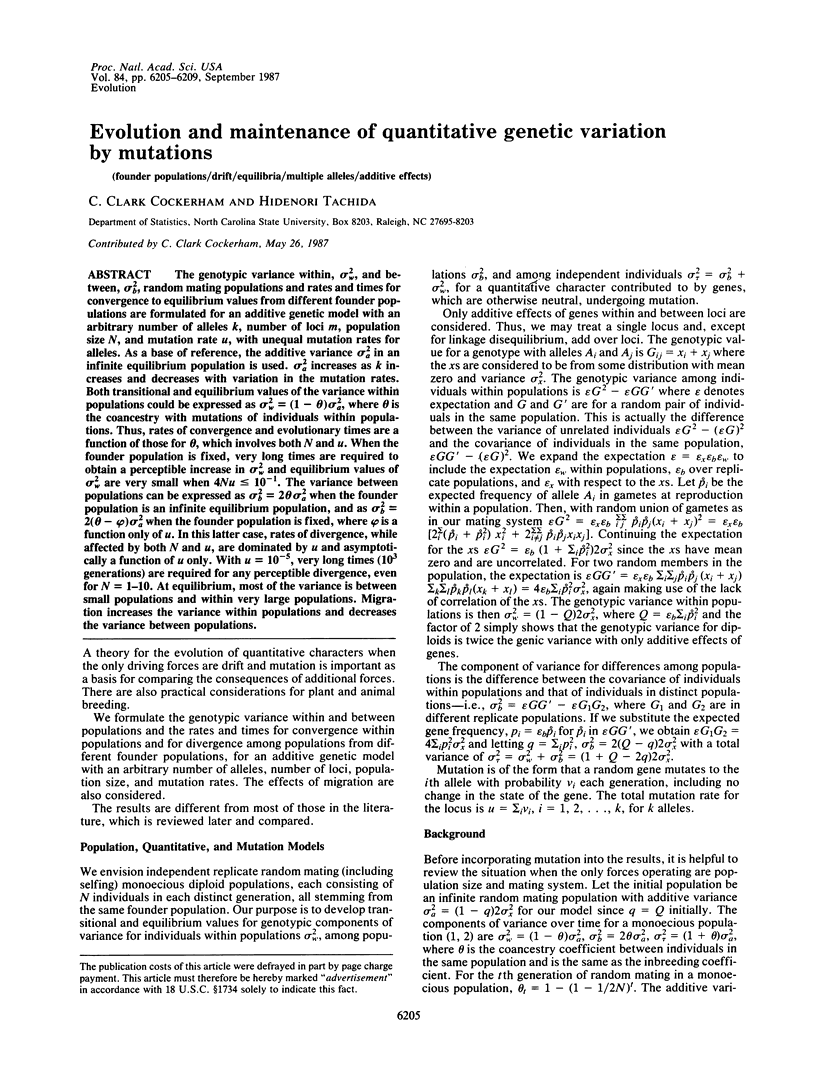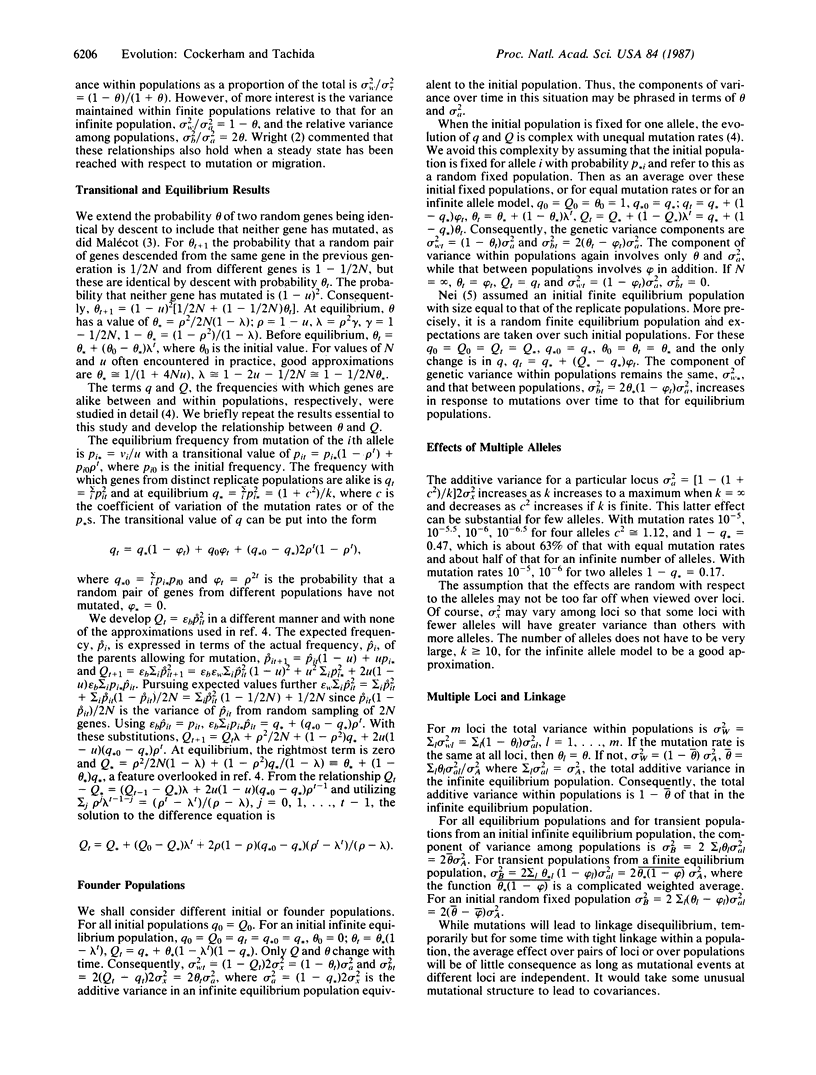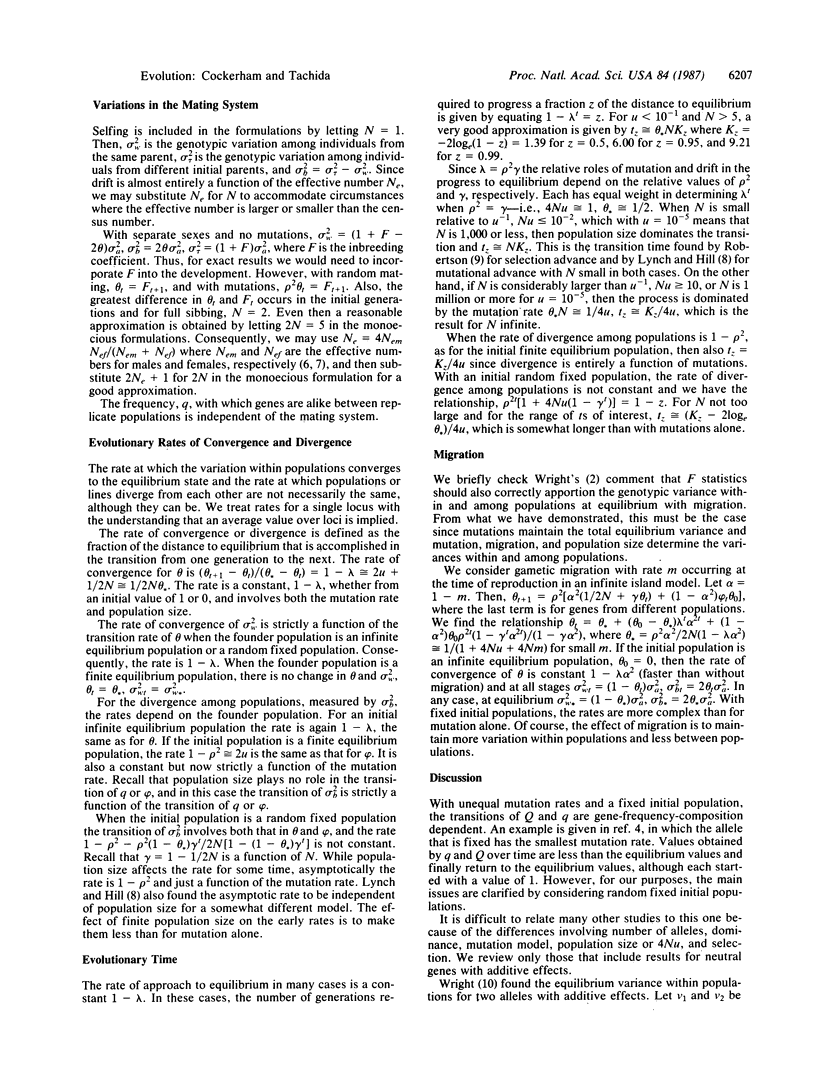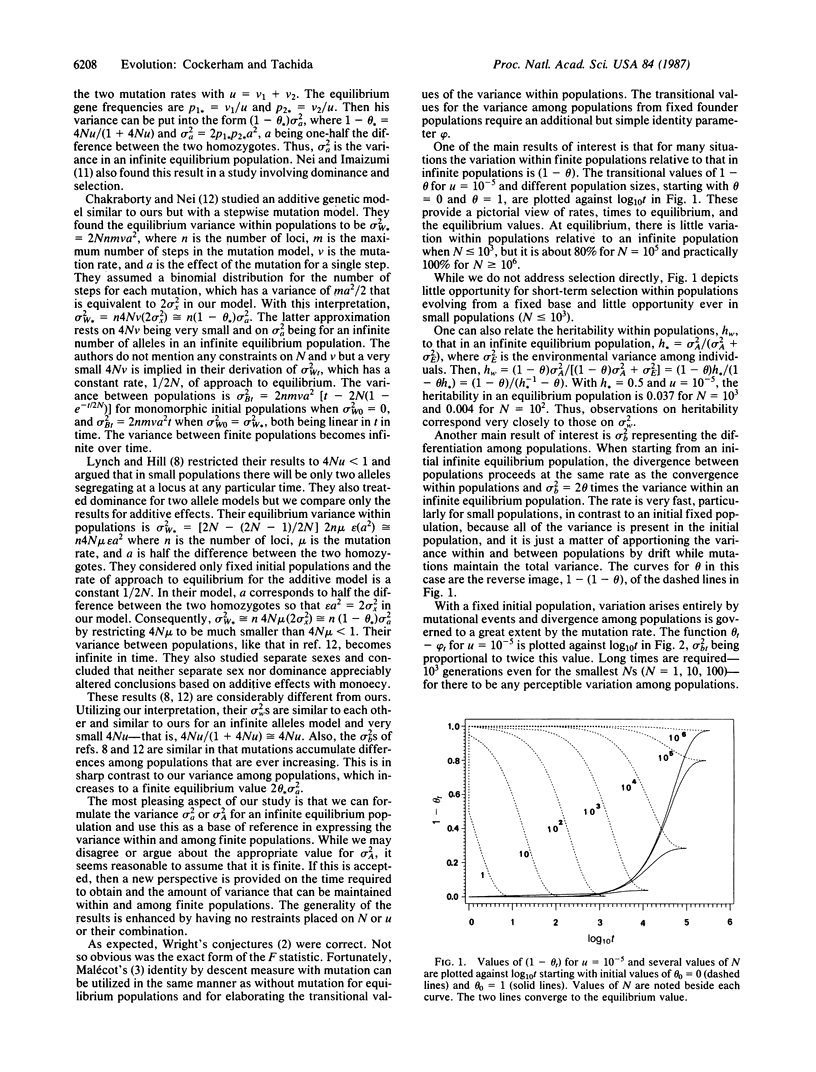Abstract
The genotypic variance within, sigma 2w, and between, sigma 2b, random mating populations and rates and times for convergence to equilibrium values from different founder populations are formulated for an additive genetic model with an arbitrary number of alleles k, number of loci m, population size N, and mutation rate u, with unequal mutation rates for alleles. As a base of reference, the additive variance sigma 2a in an infinite equilibrium population is used. sigma 2a increases as k increases and decreases with variation in the mutation rates. Both transitional and equilibrium values of the variance within populations could be expressed as sigma 2w = (1 - theta)sigma 2a, where theta is the coancestry with mutations of individuals within populations. Thus, rates of convergence and evolutionary times are a function of those for theta, which involves both N and u. When the founder population is fixed, very long times are required to obtain a perceptible increase in sigma 2w and equilibrium values of sigma 2w are very small when 4Nu less than or equal to 10(-1). The variance between populations can be expressed as sigma 2b = 2 theta sigma 2a when the founder population is an infinite equilibrium population, and as sigma 2b = 2(theta - alpha)sigma 2a when the founder population is fixed, where alpha is a function only of u. In this latter case, rates of divergence, while affected by both N and u, are dominated by u and asymptotically a function of u only. With u = 10(-5), very long times (10(3) generations) are required for any perceptible divergence, even for N = 1-10. At equilibrium, most of the variance is between small populations and within very large populations. Migration increases the variance within populations and decreases the variance between populations.
Full text
PDF




Selected References
These references are in PubMed. This may not be the complete list of references from this article.
- Cockerham C. C. Drift and mutation with a finite number of allelic states. Proc Natl Acad Sci U S A. 1984 Jan;81(2):530–534. doi: 10.1073/pnas.81.2.530. [DOI] [PMC free article] [PubMed] [Google Scholar]
- Cockerham C. C. Group inbreeding and coancestry. Genetics. 1967 May;56(1):89–104. doi: 10.1093/genetics/56.1.89. [DOI] [PMC free article] [PubMed] [Google Scholar]
- Crow J. F., Aoki K. Group selection for a polygenic behavioral trait: estimating the degree of population subdivision. Proc Natl Acad Sci U S A. 1984 Oct;81(19):6073–6077. doi: 10.1073/pnas.81.19.6073. [DOI] [PMC free article] [PubMed] [Google Scholar]
- Nei M., Imaizumi Y. Effects of restricted population size and increase in mutation rate on the genetic variation of quantitative characters. Genetics. 1966 Sep;54(3):763–782. doi: 10.1093/genetics/54.3.763. [DOI] [PMC free article] [PubMed] [Google Scholar]
- Wright S. Evolution in Mendelian Populations. Genetics. 1931 Mar;16(2):97–159. doi: 10.1093/genetics/16.2.97. [DOI] [PMC free article] [PubMed] [Google Scholar]
- Wright S. The Theoretical Variance within and among Subdivisions of a Population That Is in a Steady State. Genetics. 1952 May;37(3):312–321. doi: 10.1093/genetics/37.3.312. [DOI] [PMC free article] [PubMed] [Google Scholar]


